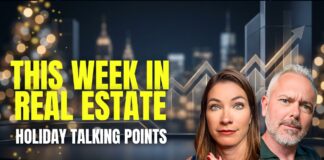The New York Times in a recent article by Ben Casselman tells us, “Economists are terrible at forecasting recessions, especially more than a few months in advance. In fact, it’s possible (though highly unlikely) that a recession has already begun, and we just don’t know it yet.”
Tara Sinclair, an economist at George Washington University, agrees. “Historically, the best forecasters have been able to do consistently is recognize that we’re in a recession once we’re in one. The dream of an early warning system is still a dream that we’re working on.”
All that being said, there are several “hints” we can pay attention to if and when we have moments of recession speculation. Just remember, these are hints and only hints:
- The Employment Rate
- Watch for: rapid increases even during times of low level employment/unemployment rates
- What It’s Saying: All Clear
- Discussion: As you know, the unemployment rate is currently near a 50-year low BUT that unemployment rate doesn’t much matter when it comes to recession forecasting. What matters is the change in the unemployment rate and how quickly that change happens.
- Claudia Satim, an economist at the Federal Reserve, indicates that the rule of thumb is the gap between the current unemployment rate to its lowest point over 12 months.
- When that gap hits 0.3% points, recession risks can be elevated.
- When that gap hits 0.5%, a downturn has likely already happened.
- Satim’s rule of thumb is a “lagging indicator” aka an already happened indicator and not the first place someone would look for or pick up on signs of trouble.
- Claudia Satim, an economist at the Federal Reserve, indicates that the rule of thumb is the gap between the current unemployment rate to its lowest point over 12 months.
- HOWEVER, Satim’s rule of thumb is reliable. When unemployment spikes, it’s highly likely a recession is happening or soon to happen.
- The Reality Currently: Unemployment is low and trending downward. According to the Brookings Institute, there is less than a I in 10 chance of recession within a year when the unemployment rate is low.
- The Yield Curve
- As we’ve discussed, the Yield Curve is the difference between short-term and long –term interest rates.
- Currently, the Yield Curve is inverted, meaning that short-term rates are higher than long-term rates.
- The Yield Curve is a measure/metric of investor confidence in the economy.
- The Federal Reserve Bank uses a metric that translates fluctuations in the Yield Curve into recession possibilities.
- The Fed’s metric is up sharply from readings last year.
- The Yield Curve metric is currently the same as it was on the eve of the Great Recession.
- BUT!!! Does the Yield Curve have the same importance as it’s had in the past since the Fed has been raising short-term rates to accommodate its huge holdings of bonds accumulated during the Great Recession?
- Perhaps not because the Fed may be skewing the Yield Curve.
- Also, it can take up to two years for a recession to follow an inverted Yield Curve.
- Also look at the stock market and the Chicago Fed’s Financial Conditions Index
- The ISM Index (data sourced for the Institute for Supply Management Index
- What To Look For: this index falling below 45 for an extended period of time
- What It’s Saying: Most Cloudy
- Discussion: Truly a leading economic indicator, the ISM Index looks at orders, inventories and hiring within the manufacturing sector. In June 2019, the Index hovered at 50 BUT the manufacturing sector is being battered by the global slowdown and trade tensions. Many experts anticipate the ISM Index will drop as a reflection of these problems.























